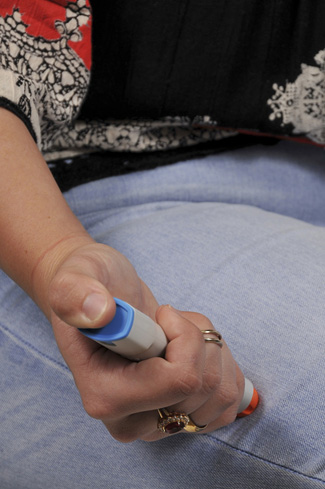We have all heard about anaphylactic shocks: a severe and sometimes fatal reaction brought on by exposure to an allergen – something to which a person is severely allergic.
But what else do we know about this extreme reaction? What are its causes and what treatment is available?
An anaphylactic shock comes about as the immune system in the body overreacts to a trigger substance, usually a food stuff, to which we are allergic. Other common causes can be as a result of stings from wasps, bees or other insects. Anaphylaxis, for the sufferer, usually occurs within minutes of exposure to the allergen or insect sting, although it is not unknown for the reaction to take up to four hours to appear.
Common allergens that can cause anaphylactic shocks include nuts and nut products, dairy products, eggs, seafood (especially shellfish) and some fruits (such as bananas, kiwi fruit, grapes and strawberries). If you’ve ever wondered why medical staff always ask you whether you are allergic to any medicines, that’s because certain antibiotics can also cause severe allergic reactions in some people.
What are the signs?
Apart from discomfort, some of the things to look out for in someone that is suffering an anaphylactic shock include:-
- Swelling, especially around the eyes, lips, hands and feet.
- Itchiness of skin or a raised and red / fiery skin rash.
- Swelling of the mouth, throat or tongue which can often quite quickly lead to breathing and swallowing difficulties.
- Feeling lightheaded and/or, unsteady on their feet or fainting.
- Wheezing.
- Severe abdominal pain – often accompanied by nausea and vomiting.
- In the most severe cases the person can collapses and/or becomes unconscious.
What should I do if someone is in anaphylactic shock?
 The first thing you should do is call 999 and request medical assistance. After that you should check if the person has an epipen or other type of auto-injector with them. Most people that suffer from severe allergies will be aware of their vulnerability and will, as a matter of caution, carry an auto-injector.
The first thing you should do is call 999 and request medical assistance. After that you should check if the person has an epipen or other type of auto-injector with them. Most people that suffer from severe allergies will be aware of their vulnerability and will, as a matter of caution, carry an auto-injector.
What the auto-injector does is allow the patient, or someone else, to inject them with a dose of adrenalin, the most effective short term way of dealing with an anaphylactic shock. If you are not familiar with how to use an auto-injector don’t worry; most carry instructions on the packaging. Essentially, you should inject the victim using the auto-injector in their outer thigh muscle for between five and ten seconds. The adrenalin you inject should quickly help to alleviate the symptoms the patient is experiencing although it may not eradicate them altogether.
If after 10 minutes of giving the injection there is little sign of improvement, or if the patient starts to feel unwell again, then it may be necessary to give them a second injection; if that is required you should do so in the opposite thigh Make sure that the patient is in a comfortable position until medical help arrives and if they are unconscious, put them in the recovery position with their head tilted back and chin lifted to aid breathing.
Even if the patient remains conscious throughout and appears to have made a full recovery, it is normal practice that the patient will be admitted to hospital, if only for a short time so that they can be properly checked over and to make sure that their symptoms don’t recur.
What happens after?
If it is the first time that the patient has suffered such a reaction, they will be referred to a specialist allergy clinic once fully recovered. Here they will undergo tests to find out what caused the shock in the first place.
Depending on the allergy the patient has, and the severity of the shock they suffered, then they may be prescribed an adrenaline auto-injector (or epipen), especially if the risk of having a repeat attack in the future is considered high. Those likely to suffer an anaphylactic shock will be expected to carry this with them at all times – as a precaution should they suffer another attack.
Once diagnosed the most important thing the patient can do is to avoid the things that can trigger an attack. So, for example, if the allergy is food related, the patient must always check the labels on all food and when eating out, sufferers must always declare their allergy to staff. If the allergic reaction is caused by insect stings then if patients are confronted by wasps or bees they should try and walk away slowly and calmly; they should not try and deflect the insects by waving their arms around; the calmer they are the less likely they are to get stung.





